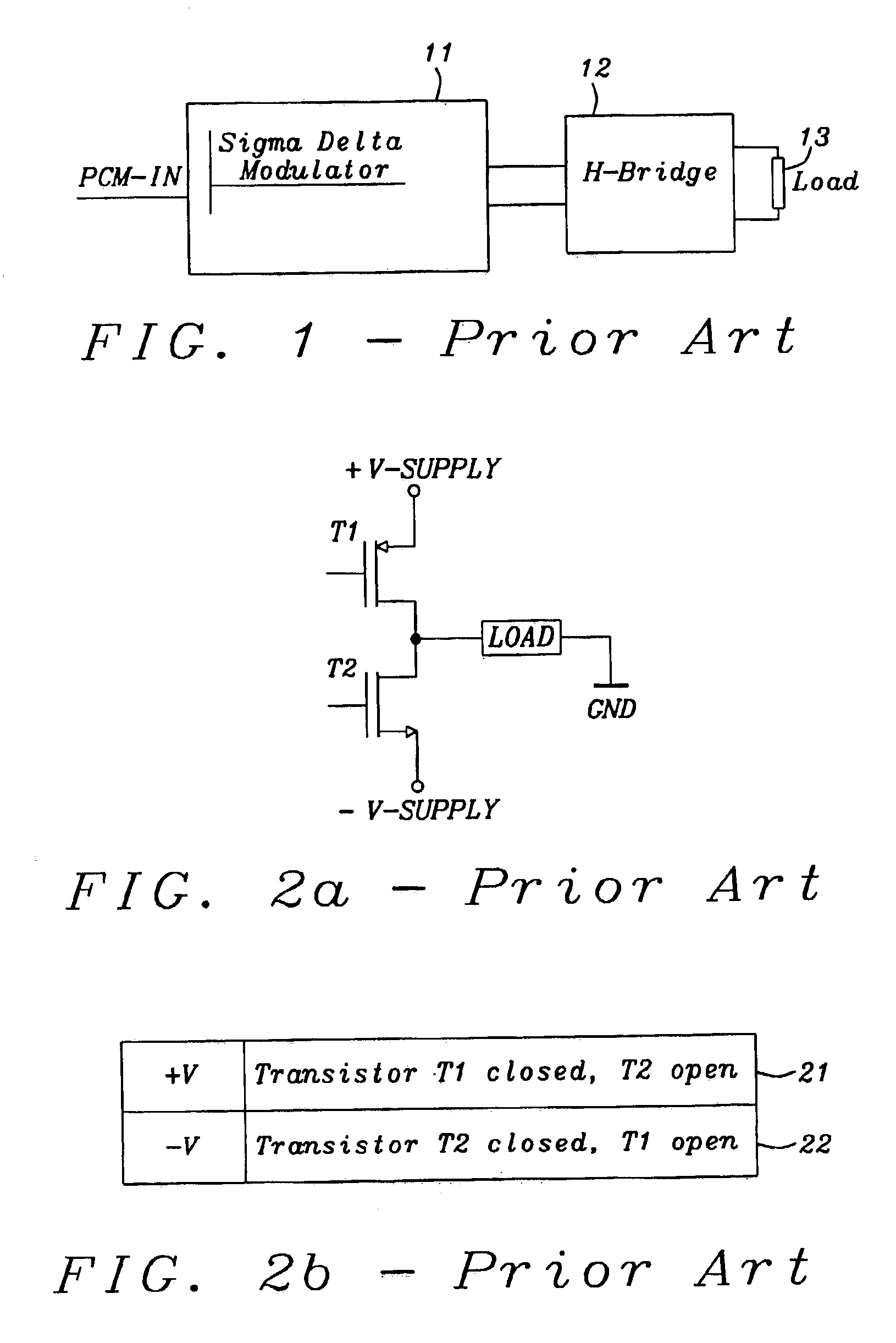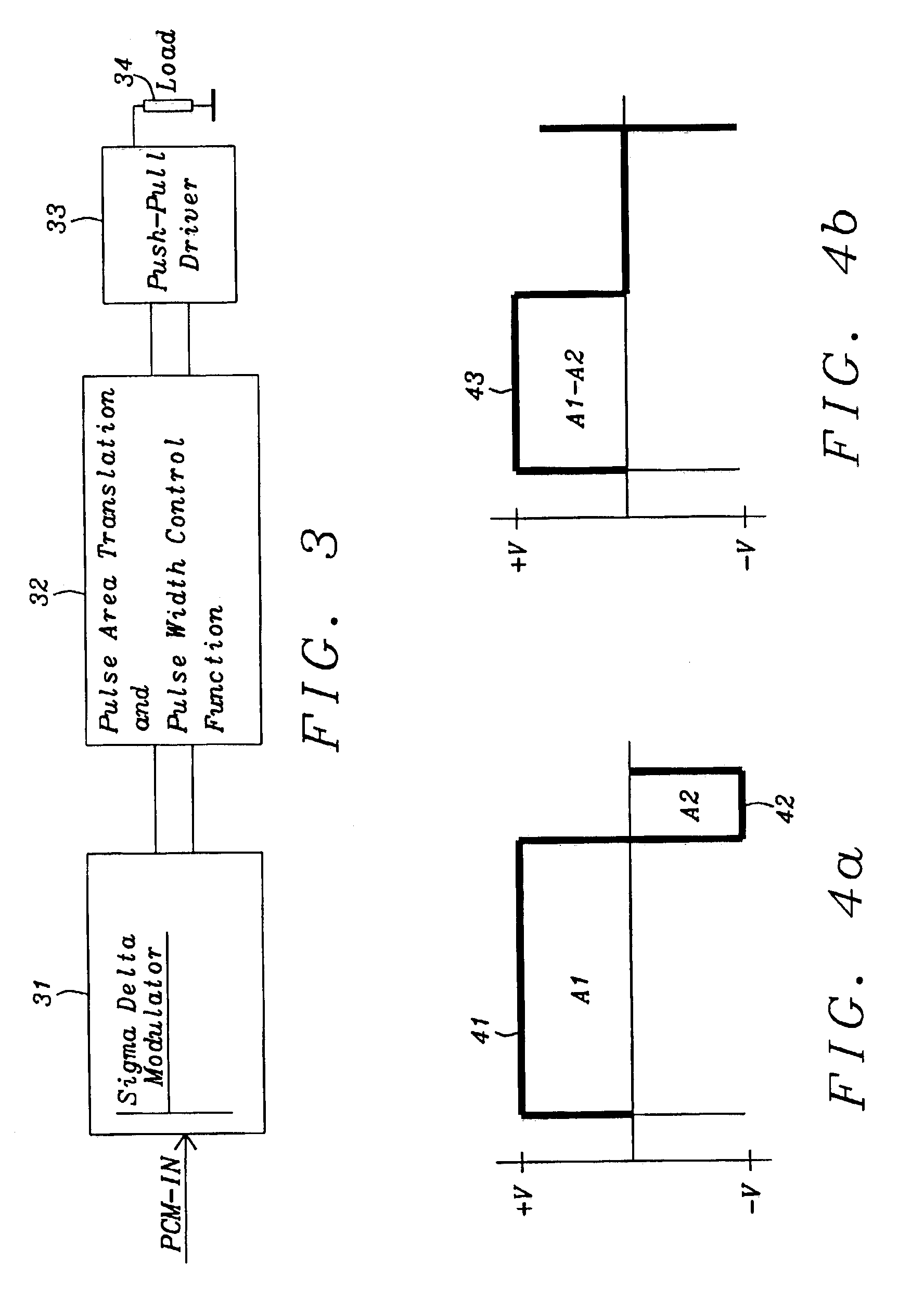Multi-level Class-D amplifier by means of 2 physical layers
a power amplifier and physical layer technology, applied in the field of class-d power amplifiers, can solve the problems of notorious inefficiency of class-ab amplifiers, and achieve the effects of reducing emi, improving power efficiency, and improving quality output signals
- Summary
- Abstract
- Description
- Claims
- Application Information
AI Technical Summary
Benefits of technology
Problems solved by technology
Method used
Image
Examples
Embodiment Construction
The objectives of this invention are to generate virtual multi-level output pulses for a Class-D Amplifier, where the output has only 2 physical levels (+V, −V). In certain environments, only a 2-level driver, like a Complementary-Pair-Driver or a Push-Pull-Driver can be implemented. The disclosed invention adds circuits and methods to transform the output from the SDM (Sigma Delta Modulator) into pulses with well-defined time-voltage areas. The disclosed invention further adds circuits and methods for a pulse length control mechanism, that produces output pulse patterns, where the sum over the positive and negative portions of a pulse results in a time-voltage area, corresponding to one of multiple discrete digital levels. In this way a multi level output from the SDM is possible even though the output driver is only able to output two discrete voltage levels. Multi-level pulse widths allow a better quality output signal. Also, using multi-level pulse widths, in contrast to just a ...
PUM
 Login to View More
Login to View More Abstract
Description
Claims
Application Information
 Login to View More
Login to View More - R&D
- Intellectual Property
- Life Sciences
- Materials
- Tech Scout
- Unparalleled Data Quality
- Higher Quality Content
- 60% Fewer Hallucinations
Browse by: Latest US Patents, China's latest patents, Technical Efficacy Thesaurus, Application Domain, Technology Topic, Popular Technical Reports.
© 2025 PatSnap. All rights reserved.Legal|Privacy policy|Modern Slavery Act Transparency Statement|Sitemap|About US| Contact US: help@patsnap.com



